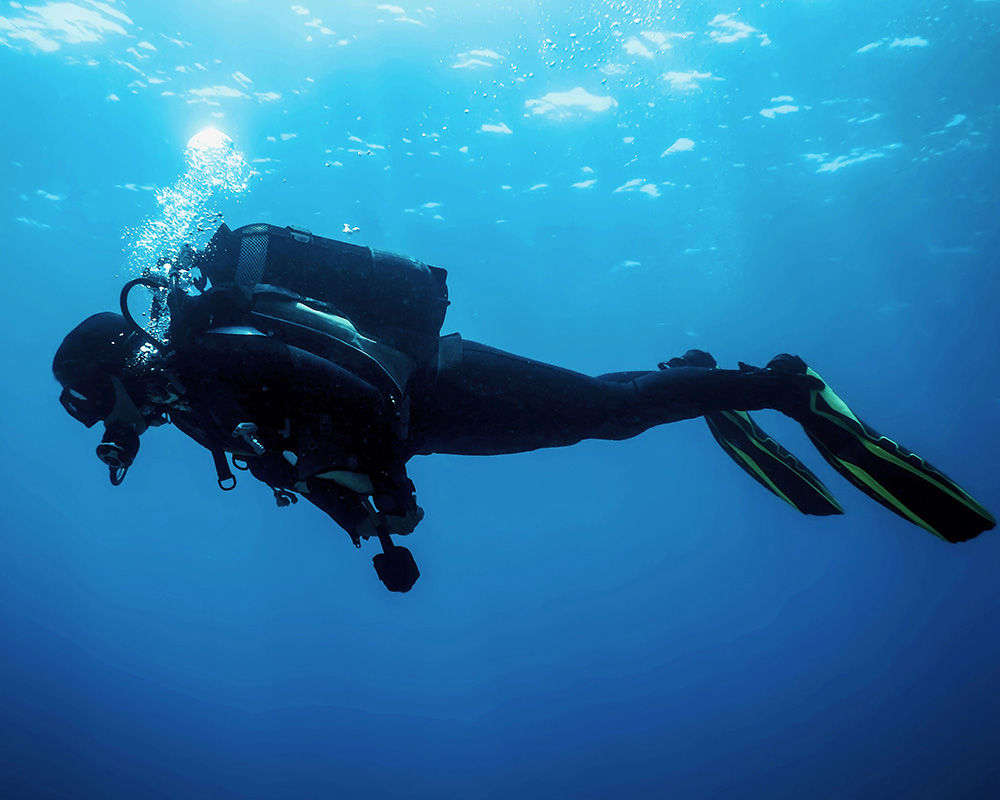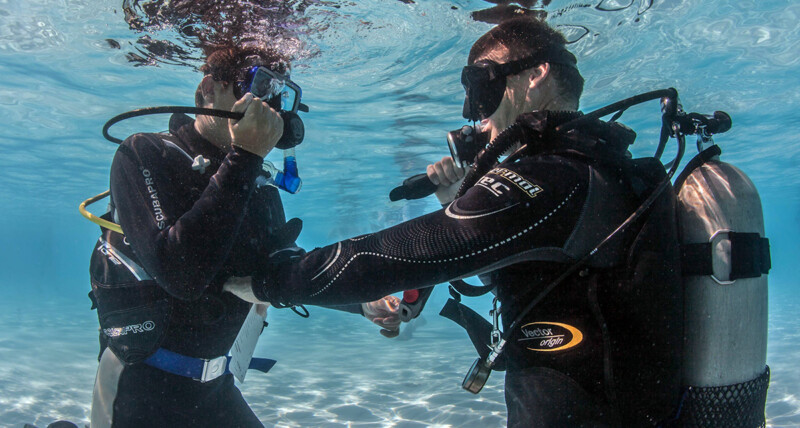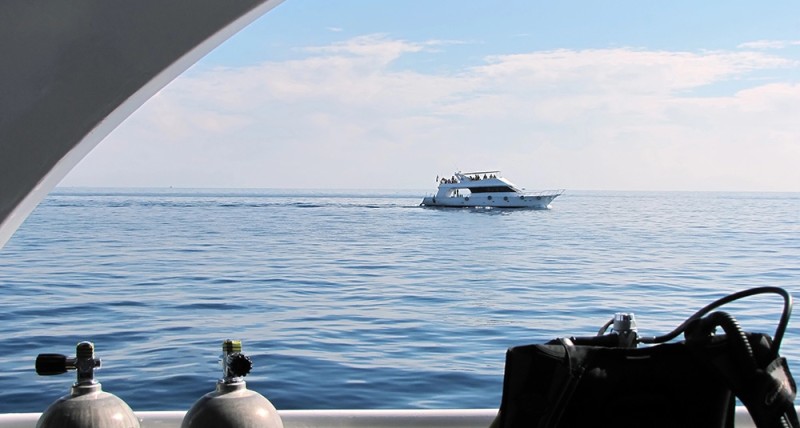Why slowing your breath beneath the waves may be the most restorative “reset” you’ll ever gift yourself—no yoga mat required.
Introduction: The Day the Noise Went Silent
Picture this: You’ve slipped below a sun-splashed surface, exhaling a river of silver bubbles. Sound narrows to a gentle hiss of air; gravity loosens its grip until you feel marvelously weightless. Ahead, a hawksbill turtle browses coral as calmly as a monk turning prayer beads. Somehow, in the span of a few fin kicks, the week-long knot between your shoulder blades unravels.
That moment isn’t a fantasy; it’s the essence of mindful immersion—the deliberate practice of turning each dive into a moving meditation. While the idea once catered mainly to high-powered executives searching for stress relief, a growing wave of mid-range to upscale adventurers now seeks the same underwater calm. This expanded guide explores the how and why, grounding every claim in sound physiology and offering practical steps to make mindfulness a built-in feature of your next descent.
1. Why Water Naturally Calms the Mind
1.1 Blue-Mind Biology
Marine biologist Dr. Wallace J. Nichols popularized the term Blue Mind to describe the mildly meditative state triggered by proximity to water. Visual exposure to blues and greens lowers cortisol (the “fight-or-flight” hormone) and nudges the nervous system toward the parasympathetic side—the body’s in-house brake pedal.
1.2 Gentle Sensory De-Clutter
Underwater, your world narrows: muffled sound, slower motion, and muted colors at depth combine to silence much of the sensory “spam” our brains process topside. The result is cognitive breathing room—ideal terrain for mindfulness.
1.3 Weightlessness and Joint Relief
Neutral buoyancy removes continuous micro-adjustments your muscles make on land. Less proprioceptive chatter equals more mental bandwidth for intentional focus.
2. Breath-Work: From Surface Stress to Subsurface Serenity
Every scuba dive already comes with a built-in respiratory metronome: inhale through the regulator, slow exhale to prevent CO₂ buildup. By extending each exhale just a second or two, you:
Activate the vagus nerve (your relaxation superhighway).
Lower heart rate by up to 10–20 beats per minute.
Conserve air, extending bottom time—practical and peaceful.
Quick Drill (Dry Land)
Sit comfortably, pinch your nose as if equalizing, and breathe in for a count of four. Purse lips and exhale for a count of six. Repeat five cycles. Notice the subtle shift? Multiply that by an entire 45-minute dive.
3. The Science Behind Mindful Diving
Heart-Rate Variability (HRV): Studies comparing dive profiles show higher HRV—an indicator of nervous-system resilience—during slow, deliberate finning versus task-loaded dives.
EEG Patterns: Preliminary research from diving medicine institutes reveals increased alpha-wave activity (associated with relaxed alertness) during neutral-buoyancy “hover” exercises.
Mood Scores: Divers who incorporated simple mindfulness cues reported a 27 % drop in self-rated tension after only two open-water sessions.
While research is still young, the physiological breadcrumbs confirm what many divers feel intuitively: mindful immersion equals measurable calm.
4. Turning Each Dive into a Moving Meditation
4.1 Pre-Dive Centering
Before you even suit up, stand on the dock, close your eyes, and visualize your descent like a slow-motion film. Three deep breaths anchor the intention.
4.2 Descent Ritual
On the downline, match equalization intervals to a silent mantra—“Clear… relax… explore.” Linking ear-clearing to words keeps the monkey mind from grabbing tomorrow’s to-do list.
4.3 Underwater Awareness
| Mindfulness Cue | How to Practice | Benefit |
|---|---|---|
| Bubble‐Counting | Count three bubble groups on each exhale before shifting gaze | Entrain slower breathing |
| Color Scan | Choose a single hue (e.g., violet) and note every instance for one minute | Sharpens focus, quiets chatter |
| Micro‐Kick Audit | Feel water flow over ankle, calf, thigh with each flutter kick | Improves trim and body awareness |
4.4 Ascent With Gratitude
During your safety stop, mentally list three sensations you appreciated— the sun-shafted thermocline, the distant whale song, the effortless hover. Gratitude tags the experience for long-term memory and reinforces positive feedback loops.
5. Gear & Sites That Support Mindful Immersion
| Element | Mindful Advantage | What to Look For |
|---|---|---|
| Balanced, Quiet Regulator | Less inhalation effort, softer exhaust | Downstream second stage with venturi switch |
| Perfect-Fit Exposure Suit | Eliminates leaks and sudden cold jolts that break concentration | Custom neoprene thickness mapping |
| Neutral Trim BCD | Hands-free buoyancy lets you focus on mindful cues | Backplate-and-wing with fine-tune wing size |
| Site Selection | Calm water, low current, high visibility | Protected bays, dawn or slack-tide schedules |
Tip: If travel time is a premium, choose resorts offering house reefs—no boat horns or gear bin chaos to jar the mood.
6. Integrating Mindfulness into Dive Training
6.1 Specialty Workshops
Several training agencies now offer “Zen Diver” or “Mindful Diving” specialties. Core skills—hovering, efficient finning, slow ascents—double as meditative exercises.
6.2 Private or Semi-Private Instruction
Smaller class sizes mean fewer task loads and more coaching on breath awareness. Upscale doesn’t have to mean exclusive; even mid-range budgets can secure focused instruction on weekday mornings or shoulder-season trips.
6.3 Retreats and Liveaboards
From Bali yoga-and-dive weeks to Caribbean liveaboards advertising “silent sunrise dives,” packages abound at price points from boutique to indulgent. The common thread: intentional scheduling that leaves space between dives for journaling, gentle stretching, or guided breath-work.
7. Beyond the Dive: Carrying Calm Into Daily Life
Breath Anchors: At your desk or in traffic, three slow exhale-weighted breaths mimic regulator rhythm.
Sensory Micro-Pauses: Recall the filtered underwater soundscape when ambient noise spikes.
Weekly “Blue Time”: Even a pool session with mask and snorkel can reignite the relaxing feedback loop.
8. Practical Tips for the Busy and Curious
Weekend Micro-Retreats: Two-tank Saturdays within a two-hour flight can reset your nervous system without burning PTO.
Buddy Check-In: Share a mindfulness cue pre-dive; hold each other gently accountable.
Surface Visualization: Practice bubble-counting during your shower; hot water plus controlled breathing approximates some sensations of a warm-water dive.
9. Frequently Asked Questions
| Question | Answer |
|---|---|
| “Will mindfulness distract me from safety?” | Done right, it enhances situational awareness by clearing mental noise; always keep standard safety checks non-negotiable. |
| “Do I need to be spiritual?” | No. Mindful immersion is about focus and breathing—not belief systems. |
| “Can beginners try this?” | Absolutely. Start with Discover Scuba or Open Water courses that allocate time for buoyancy practice rather than race through skills. |
10. Pathways to Your First Mindful Dive
Discover Scuba Experience – A half-day pool and shallow ocean session to taste weightlessness and breath focus.
Open Water Certification – Four confined-water and four open-water dives; choose an instructor who values slow pacing.
Mindful Diving Specialty – Extend buoyancy drills, add pre-dive centering and post-dive reflection exercises.
Liveaboard Immersion – Multiple dives per day allow rapid feedback loops; by day three, mindful cues become second nature.
Conclusion: Your Personal Zen Reef Awaits
Mindful immersion isn’t reserved for a corner-office few; it’s an accessible, science-backed path to mental clarity for anyone ready to linger on each breath and savor each coral-crusted moment. Whether you’re juggling spreadsheets, family schedules, or your next entrepreneurial leap, the ocean offers a pressure-equalized pause button.
Ready to feel the hush beneath the surface? Contact ScubaDives.com for a private consultation—and start planning a trip where every exhale carries stress away on a stream of shimmering bubbles. Dive in, slow down, and surface renewed.




